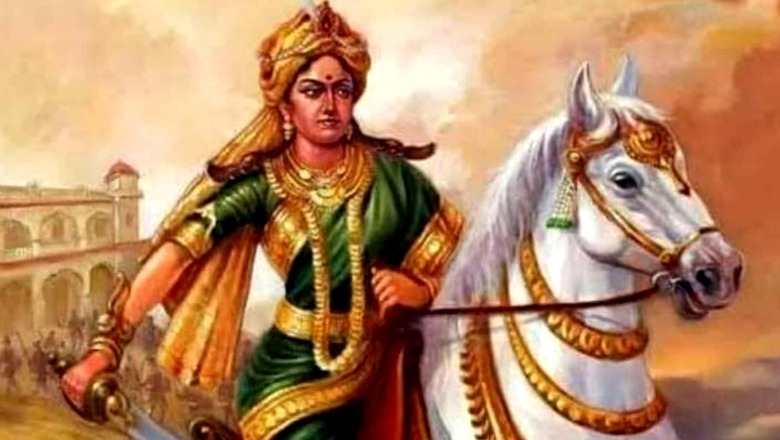
views
Tamil Nadu’s tableau proposal for the Republic Day parade in New Delhi was rejected by the Centre on January 17. It has evoked widespread disappointment in the state including among political parties. The expert committee had asked Tamil Nadu officials to portray freedom fighters of national fame in the tableau and the state had proposed the portraits of well-known freedom fighters such as VO Chidambaranar, Subramania Bharathiyar, Rani Velu Nachiyar, and Maruthu Brothers.
The Centre had also rejected proposals of Kerala and West Bengal. Expressing his disappointment through a letter, Chief Minister MK Stalin sought the immediate intervention of PM Modi to include Tamil Nadu’s tableau showcasing the freedom fighters of Tamil Nadu in the Republic Day parade.
According to official sources, during discussions for the selection of the tableau, the central committee members described VO Chidambaranar as a businessman and questioned the need to give him importance. The members had also asked about Rani Velu Nachiyar and wondered ‘why she looked like Jhansi kiRani’ and that a Tamil-style attire should be given to her portrait.
Why Should Rani Velu Nachiyar Be Celebrated?
Many historians hold an opinion that India’s liberation struggle should be written from the South. The Tamils fought valiantly against the British 100 years before the first soldier’s revolt in Indian history in 1857 AD.
Rani Velu Nachiyar was the first female to liberate India from the grip of the British Empire. She was India’s first female liberation fighter, born 293 years ago. Recently, on the eve of Rani Velu Nachiyar’s birthday, Prime Minister Narendra Modi took to Twitter and posted in Tamil, ‘I remember Veeramangai Rani Velu Nachiyar’s birthday. Her heroism and bravery will inspire future generations. Her personality in fighting oppression is astonishing. I adore her for realizing the glory of feminine power,’ he tweeted.
Remembering the brave Rani Velu Nachiyar on her birth anniversary. Her indomitable courage shall keep motivating the coming generations. Her strong commitment to fight colonialism was remarkable. She personifies the spirit of our Nari Shakti.— Narendra Modi (@narendramodi) January 3, 2022
Rani Velu Nachiyar was born during 1730 AD as the only daughter of King Chellamuthu Vijayaragunatha Sethupathi and Sakkandi Muthathal couple of Ramanathapuram. Though an only daughter, Velu Nachiyar was raised as a male heir. She also received weapons training, including swordsmanship and mace. During 1746, she married Sivaganga king Muthuvaduganatha Devar.
On June 25, 1772, the Sivaganga troops were besieged by a British general. Muthuvaduganathar, with his soldiers was martyred in the war against the British troops. Subsequently, Velu Nachiyar left the burial place of her husband Muthuvaduganathar and rushed to Viruppachi, a place near Dindigul district in Tamil Nadu.
Velu Nachiyar with Thaandavarayan Pillai and daughter Vellachi Nachiyar took refuge under Gopal Nayak in Viruppachipalayam, near Dindigul. Later Rani Velu Nachiyar’s bodyguards Vellaimaruthu and Chinnamaruthu also joined her. Rani Velu Nachiyar, along with the commanders Maruthu brothers, built a new regiment.
Velu Nachiyar stayed at the Dindigul hillfort for some period with the help of Haider Ali, the ruler of Mysore. Haider Ali, Gopal Nayak and many others helped to build the Velu Nachiyar’s brigade. She fought a relentless war with the British for over 7 years and restored the lost Sivaganga Kingdom.
Kuyili, one of Velu Nachiyar’s generals, destroyed a British ammunition depot by a suicide attack. Commander Kuyili made history as the world’s first suicide bomber fighter. When Velu Nachiyar reclaimed Sivaganga, Chinnamaruthu was arranged to serve as the Chief Minister of the country and Vellaimaruthu as the Commander-in-Chief of the kingdom.
Rani Velu Nachiyar followed her husband’s path and ruled Sivaganga till 1789 AD. She gave powers to the Maruthu brothers to govern the kingdom. On the whole, Velu Nachiyar ruled for a decade before stepping down and passed away in 1796.
Read all the Latest India News here




















Comments
0 comment